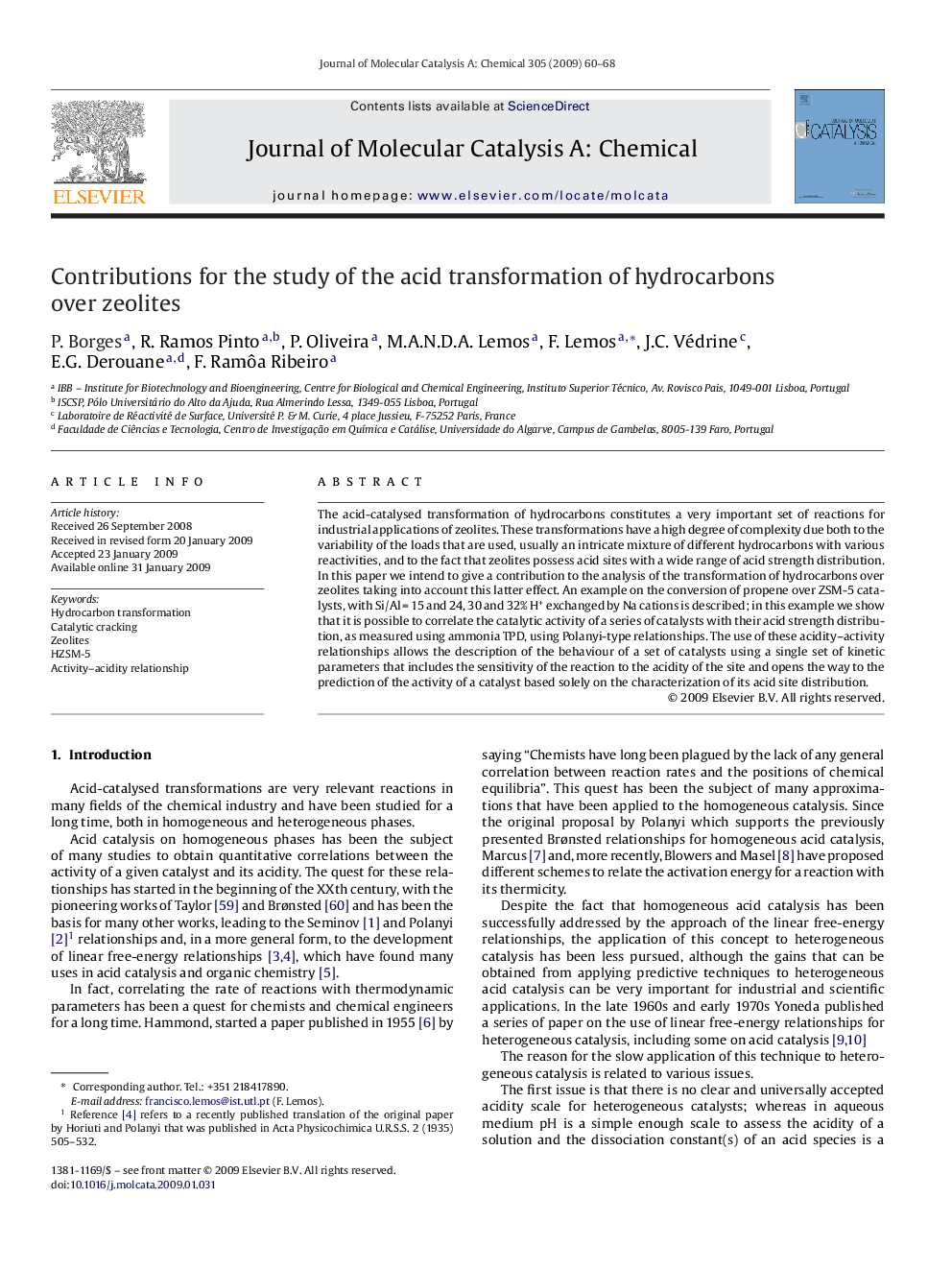| Article ID | Journal | Published Year | Pages | File Type |
|---|---|---|---|---|
| 66975 | Journal of Molecular Catalysis A: Chemical | 2009 | 9 Pages |
The acid-catalysed transformation of hydrocarbons constitutes a very important set of reactions for industrial applications of zeolites. These transformations have a high degree of complexity due both to the variability of the loads that are used, usually an intricate mixture of different hydrocarbons with various reactivities, and to the fact that zeolites possess acid sites with a wide range of acid strength distribution. In this paper we intend to give a contribution to the analysis of the transformation of hydrocarbons over zeolites taking into account this latter effect. An example on the conversion of propene over ZSM-5 catalysts, with Si/Al = 15 and 24, 30 and 32% H+ exchanged by Na cations is described; in this example we show that it is possible to correlate the catalytic activity of a series of catalysts with their acid strength distribution, as measured using ammonia TPD, using Polanyi-type relationships. The use of these acidity–activity relationships allows the description of the behaviour of a set of catalysts using a single set of kinetic parameters that includes the sensitivity of the reaction to the acidity of the site and opens the way to the prediction of the activity of a catalyst based solely on the characterization of its acid site distribution.
Graphical abstractThe acid-catalysed transformation of hydrocarbons has a high degree of complexity due both to the variability of the loads that are used, usually an intricate mixture of different hydrocarbons with varying reactivity, and to the fact that zeolites possess acid sites with a wide range of acid strength distribution. In this paper we intend to give a contribution to the analysis of the transformation of hydrocarbons over zeolites taking into account this latter effect. An example on the conversion of propene over ZSM-5 catalysts, with Si/Al = 15 and 24, 30 and 32% H+ exchanged by Na cations is described; in this example we show that it is possible to correlate the catalytic activity of a series of catalysts with their acid strength distribution, as measured using ammonia TPD, using Polanyi-type relationships. The use of these acidity–activity relationships allows the description of the behaviour of a set of catalysts using a single set of kinetic parameters that includes the sensitivity of the reaction to the acidity of the site and opens the way to the prediction of the activity of a catalyst based solely on the characterization of its acid site distribution.Figure optionsDownload full-size imageDownload as PowerPoint slide
